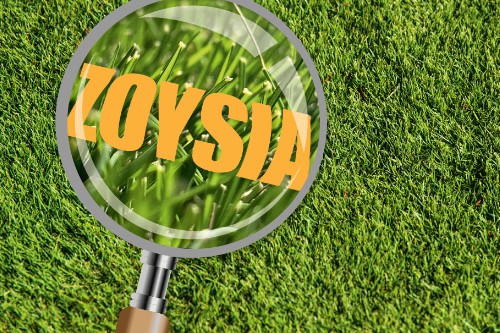
News

Zoysia Grass in focus
September 24, 2021
Pronunciation
Zoi see uh
Zoysia grass are warm season grasses that are native to South East Asia and the pacific region. These grasses are commonly known to be highly drought and wear tolerant.
Zoysia as a turf grass type has several different sub-genus, all of which carry very different characteristics and aesthetics to the next. While they still do carry the name botanically in a lot of marketing material, it is important to understand the difference when looking at the different options available.
Key Characteristics
Most Zoysia grass types are well-adapted to tropical, sub-tropical and warm temperate climates in Australia.
- Establish slower than most other grass types.
- Zoysia Grass have a relatively fine leaf up to 5mm wide and 40-50mm long which is soft to touch.
- Zoysia grasses spread both by stolons and by rhizomes and are noted for their relatively slow growth rate which reduces the frequency that mowing is needed.
What are the main zoysia turf types?
Zoysia Macrantha
Zoysia Macrantha’s are the only zoysia which are considered Australian natives and are commonly referred to as prickly couch. Some examples of Macrantha which are available on the Australian market are Nara Native Zoysia and Stockade Native. Macrantha generally performs better in the warmer climates of Australia and in full sun areas. Macrantha’s leaf shape and colour varies depending on the variety but are medium to coarse and light green in colour. The wear tolerance and shade tolerance of Zoysia Macrantha’s are inferior to the other types of zoysia.
Zoysia Japonica
Zoysia Japonica originates and is native to the coastal grasslands of South East Asia. Japonica’s have been introduced and used as a popular choice for home lawns and public areas around the world. The common types of Zoysia Japonica which are available around Australia are Empire Zoysia and Platinum Zoysia. Japonica’s have a medium leaf texture, fair shade and wear tolerance and again are more suited to the warmer climates of Australia. Zoysia Japonica’s will struggle through the colder months in southern areas of Australia.
Zoysia Matrella
Like Japonica’s, Zoysia Matrella’s are native to South East Asia. Unlike their Japonica counterparts, Matrella’s have a very fine leaf and have high shade tolerance. Until just recently, Matrella’s were primarily used in golf, but now their qualities have proven they are perfect for home lawns and commercial applications. They require less mowing, less fertiliser, less water and have higher density than the other zoysia’s. Matrella’s that are on the Australian market include Sir Grange (Zeon Zoysia) and Shadetuff. Zoysia Matrella can be successfully installed all around Australia and make for a fantastic lawn both domestically and commercially.
Important points for installation of zoysia grass
- Install the grass as soon as possible after delivery
- Lay on a bed of at least 150mm quality sandy loam (high sand content is essential) or washed sand
- Use Lawn Solutions Australia Lawn Launcher at label rates to give the grass
- a head start and retain moisture in the new soil bed
- Roll to compact new turf to improve contact with the soil
- For the first 14 days, irrigate the new lawn for at least 40 mins every day
- After the initial 14 days post installation, you can reduce irrigation to every second day for the next 14 days
- Reduce irrigation once established and water only when the grass appears dry
- Minimise irrigation in the cooler months to avoid your lawn getting waterlogged
- Consult your local supplier for seasonal advice on installation timing in cooler regions
Maintenance of Zoysia Grass
Irrigation
If watering is necessary once established, water only when there are signs of the grass drying out, e.g. wilted leaves
- Do not over water in the cooler winter months
- If irrigation is needed, deeply soak the top 100mm of soil
- Water early morning for improved efficiency and plant health
Mowing
Zoysia grasses, Zoysia Matrella in particular, have a leaf blade that has a high silicone content, which makes it very strong. This, along with its dense vertical growth, gives grasses like Sir Grange superior surface strength and appearance.
- Ensure that mower blades are sharp to prevent tearing of the leaf
- Never remove more than 1/3 of the leaf blade at any one time unless dethatching
- For best results, dethatch in late winter just before the grass comes out of dormancy
- Remove clippings each mow to prevent thatch build-up
Fertilising
- Fertilise between early spring and mid to late summer if required
- It is not recommended to fertilise in autumn, wait until spring to reapply if needed
- Liquid iron, natural colourants and micronutrients can be used to improve colour without the use of nitrogen-based fertilisers in autumn and winter
Weed and pest control
Most commercially available chemical weed and pest control products can be used on zoysia lawns, but it is always best to read the label and check with your Lawn Solutions Australia grower for recommended products before any application.
Lawn Solutions Australia supplies Sir Grange Zoysia which has been selectively bred for its superior drought and shade tolerance, as well as reduced need for additional nutrients. Sir Grange has been hand selected from over 10,000 different varieties of turf, with its superior qualities making it stand out from the crowd.
Sir Grange was originally developed for the golf industry, but it was soon discovered that due to its characteristics, it would make a fantastic home lawn. Its adaptability to a variety of climates in combination with the beautiful dark green leaf has seen it become the top-selling zoysia grass in the USA.

Only accredited Lawn Solutions Australia turf suppliers can supply Sir Grange Zoysia.